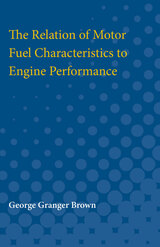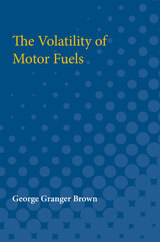4 books about Brown, George

Bede
Part 1
Edited by George Hardin Brown and Frederick Biggs
Amsterdam University Press, 2015
Bede is the inaugural volume in the Sources of Anglo-Saxon Literary Culture series, which seeks to comprehensively map British literary culture from 500 to 1100 CE. This volume presents four texts, or fascicles, dedicated to the Venerable Bede (d. 735), theologian and author of the Historia ecclesiastica gentis Anglorum. Articles provide a wealth of information on Bede through manuscript evidence, medieval library catalogs, citations, and quotations. Using discussions of source relationships, the entries weigh and consider different interpretations of Bede’s works and suggest possibilities for future research. Part of an exciting new reference series, this book“and those that follow“will be indispensable to anyone interested in the history and literature of the period.
[more]

Bede
Part 2
Edited by George Hardin Brown and Frederick M. Biggs
Amsterdam University Press, 2016
This newest volume in a long-running work of mapping the sources of Anglo-Saxon literary culture in England from 500 to 1100 CE takes up one of the most important authors of the period, the eighth-century monk-scholar known as the Venerable Bede. Bede is best known as the author of the Historia ecclesiastica gentis Anglorum, which is one of the key sources for our historical and cultural knowledge of the period; this collection covers that and more, drawing on manuscript evidence, medieval library catalogues, Anglo-Latin and Old English versions, citations, quotations, and more, putting Bede and his work in the context of his period.
[more]

Relation of Motor Fuel Characteristics to Engine Performance
George Granger Brown
University of Michigan Press, 1927
This publication looks at the relation of motor fuel characteristics to engine performance. In order to give satisfactory engine performance a motor fuel must have adequate partial volatility to enable the motor to be started and operated at the lowest temperatures found in the manifold. The dew point or temperature of complete vaporization should be low enough to prevent condensation on the cylinder walls, and high enough to prevent appreciable superheating of the mixture in highly heated manifolds. The vapor pressure should be limited in order to prevent gassing in the carburetor bowl or fuel ducts. The anti-knock quality of the fuel should be sufficient to prevent engine knocking and the accompanying loss in power and efficiency.Fuels meeting these requirements of volatility may be produced at no increase in cost by blending material having the desired volatility at low temperatures with other material having the desired dew points. Anti-knock qualities are generally improved by increasing the volatility but can be best obtained by selecting or treating the fuel specifically for this purpose.
[more]

The Volatility of Motor Fuels
George Granger Brown
University of Michigan Press, 1930
The ease with which a motor will start, the length of time required to warm it up, and the character of its general performance are almost wholly dependent upon the volatility of the fuel as indicated by the A.S.T.M. distillation curve. The 10-percent point is related to the lowest engine temperature at which satisfactory starting may be obtained, and the lowest mixture temperature at which the car may be operated. The 35-percent point is related to the lowest mixture temperature at which satisfactory performance may be obtained during the warming-up period and therefore determines the length of time necessary to warm up the motor. The 65-percent point is related to the lowest mixture temperature at which perfect performance can be obtained. For these reasons the 10-, 35-, and 65-percent points should be low to ensure satisfactory starting, warming-up, and general performance. The 90-percent point, however, should not be so low as to indicate a dry mixture, for this means loss in power or acceleration with many modern cars equipped with heated manifolds and accelerating devices. The vapor pressure of the fuel or the 10-percent point should not be so low as to indicate trouble from vapor-lock.The relations developed in The Volatility of Motor Fuels make it possible to determine the volatility characteristic of a fuel for any desired engine performance.
[more]
READERS
Browse our collection.
PUBLISHERS
See BiblioVault's publisher services.
STUDENT SERVICES
Files for college accessibility offices.
UChicago Accessibility Resources
home | accessibility | search | about | contact us
BiblioVault ® 2001 - 2025
The University of Chicago Press









